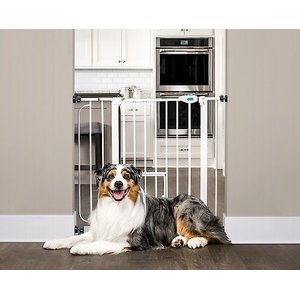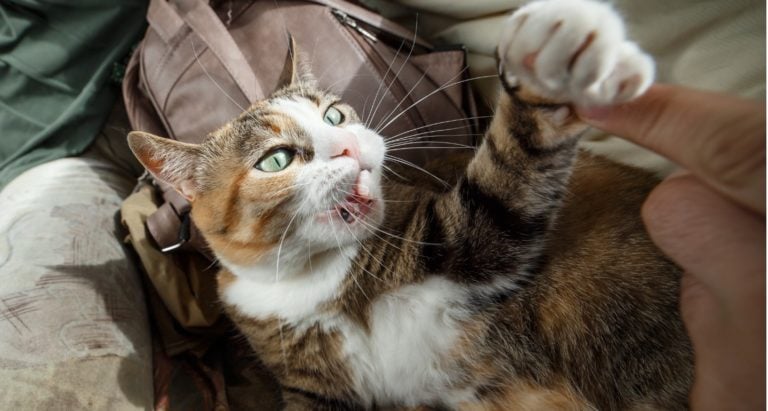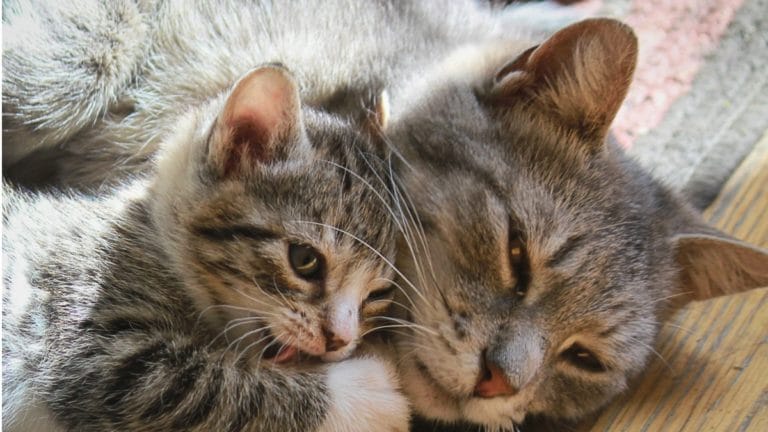It’s a common situation for many pet parents: you have a pet (or a few!) at home, but you’d like to add another to your family. You know how to get a new pet settled into your home comfortably, but introducing new pets to existing ones can be different. These tips can help ensure a smooth transition.
Introducing a New Dog
Introducing a new dog to your longtime dog in residence is similar to setting up a play date with a dog that is unknown to your pets. You’ll want to introduce your newest friend on neutral ground that neither animal has claimed as her own territory. Ask a friend to help out in this process.
First, ensure that the dogs are well-fed, and have them meet separately on leashes for a long walk to help work off some of the excitement of meeting a new animal. Allow your existing pet to walk ahead of the new dog, at some point dropping back so that your existing pet can sniff the rear of the new dog. Then switch places so that the new dog drops back and sniffs your current pet. If either of them poops, allow the other to sniff the droppings. By getting familiar with each other’s scents, the animals will have done the doggie equivalent of shaking hands.
Introducing a Dog to a Cat or Vice Versa
When introducing a dog to a cat for the first time, create a safe place for the cat in every room—on top of a bookshelf, for example. Set up another spot behind a pet gate or cat door where the dog can’t get to the cat or her food or litter. No one likes to be ambushed while taking care of business, especially a wary kitty.
Time for the meeting! First, ensure the dog is well-fed and exercised to avoid even the slightest whiff of predatory responses in the animals’ interactions. Put the cat in a safe place and allow the dog to roam the house for a half hour or so to get to know the cat’s scent. Then put your pup in his dog crate or another room and allow the cat to get to know the dog’s scent.
After they’ve taken in each other’s scents, graduate to a face-to-face meeting. Keep your dog on a short leash and restrain him if he shows aggression or tries to bolt for the cat. If the cat is particularly skittish or tends to bite or claw when scared, keep her in her carrier for this part. Keep in mind that some hissing is to be expected.
Reward them individually for calm behavior by stroking them and handing out dog and cat treats. Repeat this process several times a day or over several days until they have displayed tolerant—if not affectionate—behavior toward each other.
You might need to call in a professional trainer if they just refuse to be friendly.
Introducing a New Cat
When introducing a new cat, start by confining the new cat to a bedroom for a few days with its own food, water and litter box. Gradually socialize your cats by putting their food bowls closer and closer to the door of the room where the new cat is confined. That way, they’ll begin to associate each other’s scents with one of their favorite things—food! You can also attach toys on strings to each side of the door so that the cats get used to playing around each other. Swap their bedding or try rubbing the cheek of one kitty with a washcloth and placing it as a mat under the more resistant pet’s food bowl.
Eventually, allow each feline to spend time in the other’s space, keeping the cats separated if you need to leave the house. Their good behavior toward each other will signal the time when they can be allowed into the same space with each other.
In all cases of introducing a new pet, be sure all animals are in good health by taking them to the vet before planning your furry meet-and-greet.
Share:













